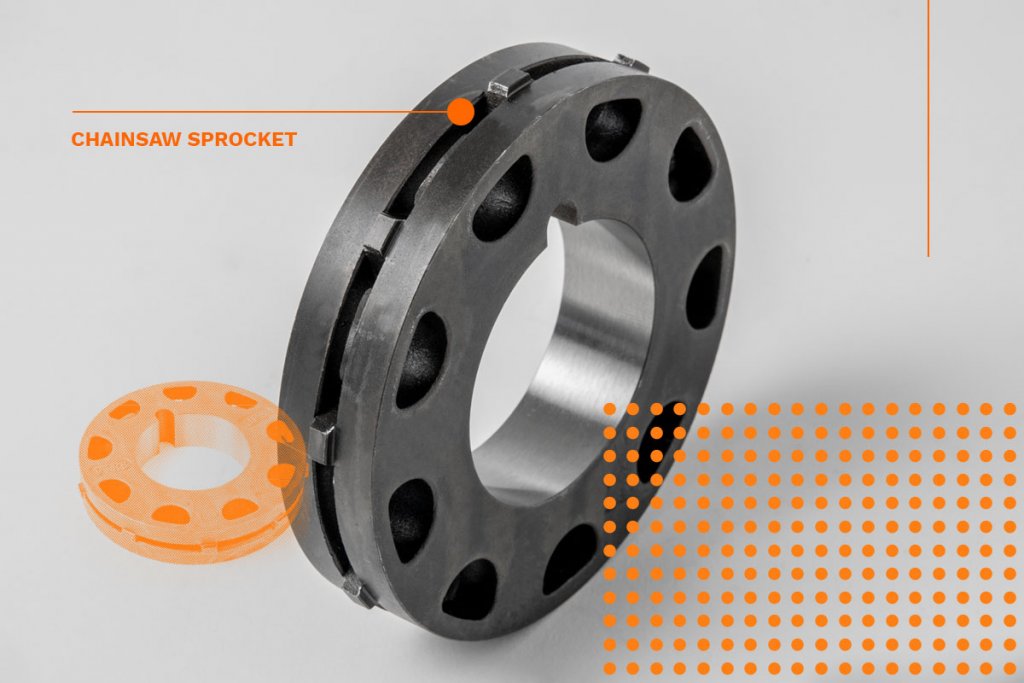

Producing industrial parts requires accuracy, safety, and cost-saving efficiency. Most industries start with manual machining, but it is an old-fashioned manufacturing method. This process leaves room for error, operator accidents, and product inconsistencies. Thankfully, there are many different types of CNC machines that provide the answer to this problem.
CNC (Computer Numerical Control) machining is a common manufacturing process that uses pre-programmed computer software to operate factory tools and machinery. CNC machines are responsible for making parts in almost every industry throughout the world. They create products and components out of aluminum, plastics, wood, and other hard materials.
There is more than one type of CNC machine, and each one serves a specific purpose in parts manufacturing. This guide will discuss various CNC machining methods, including the top-tier 6-axis CNC machine.
What Are CNC Machines?
Automated motion control machines utilize three components:
- a command function
- a drive system
- a feedback system
CNC machining is a process that uses a computer-driven machine tool to transform a piece of solid raw material into a different shape. This process depends on digital instructions made on CAM (Computer Aided Manufacturing) or CAD (Computer-Aided Design) software capable of writing G-code. These codes have numerical values that the CNC machine’s controller can read to execute the process from beginning to end.
Once the computer on the controller interprets the design, it moves either the cutting tool or workpiece on multiple axes to cut the desired shape into the raw material. It exceeds the limitations of manual operator controls that require a live worker to press buttons or move levers. The machine knows what to do by reading specific machining commands.
Types of CNC Machines
Automated manufacturing allows industries to create parts quickly and precisely, but not all components are created equal. The type of CNC machine needed to make the final product depends on the part’s dimensions and geometric patterns.
CNC machines are typically divided into these five groups:
- 2-axis
- 2.5-axis
- 3-axis
- 4-axis
- 5-axis
The axes determine the machine’s abilities, including how it moves, how it cuts into the workpiece, and whether or not it maneuvers the material or cutting tool to create the finished product.
For example, 3-axis machining keeps the workpiece in a stationary position while the cutting tool moves on an XYZ plane to trim away unnecessary material. It is ideal for milling slots, cutting sharp edges, and drilling holes in mechanical components.
CNC Milling Machine
This commonplace CNC machine includes built-in rotary cutting tools to drill and cut raw materials. The process begins by placing a metal, wood, or plastic block inside the machine. Next, the computer tells the machine how to cut or drill into the material.
CNC milling machines are ideal for making notches, grooves, shapes, and pockets. They are available primarily as 3-axis machines, but they can go up to 6-axis.
CNC Plasma-Cutting Machine
This machinery also cuts materials, but it uses a computer to maneuver a high-powered torch, instead of a rotary tool, to cut into 2D metal sheets or wood. The torch is strong enough to quickly burn through dense metal, with temperatures reaching almost 50,000 degrees Fahrenheit.
Manufacturers commonly use CNC plasma cutting in welding centers, auto repair shops, and industrial construction centers.
CNC Lathe Machine
Lathe machines move the raw material on a spindle instead of maneuvering a cutter or torch, and these devices use fewer axes than milling machines. CNC lathe machinery has a lathe in the center that rotates and manipulates the material to form the required shape. The computer controls the positioning of the material.
CNC lathes are used in industries like automotive, aerospace, and firearm manufacturing.
CNC Laser-Cutting Machine
For rigid materials, the CNC laser cutting machine is an ideal choice. The powerful laser provides increased accuracy, and it can cut custom designs and shapes into the raw material. Its operation is similar to plasma cutters, but it can also cut plastic with precision.
CNC Grinders
CNC grinding machines use a stationary wheel to cut into a workpiece. These systems are available up to 5-axis, and they work with high-pressure coolants to quickly remove metal pieces from the part without burning the equipment.
Manufacturers use grinders for grinding milling cutters, surface grinding, contour grinding, and flute grinding.
6-Axis CNC Machine
6-axis CNC mills are a step above 5-axis milling machines. These remarkable machines use an additional rotation axis along the Z-axis, resulting in a noticeable speed improvement over the 5-axis variety. The extra axis allows the tool to have more movement and transitions at higher speeds without sacrificing accuracy.
A 6-axis machine is ideal for volume machining steel, aluminum, and cast iron. It is powerful enough to convert the raw metal into the final product without additional equipment.
It’s a multi-functional piece of manufacturing equipment that can permit end-users to carry out various operations from one machine. Automotive machining centers can use this machinery for drilling, milling, and turning. Each of these procedures requires a modification to the tool or software control system, but the process will improve productivity and reduce production time.
This milling machine can reduce cutting times by up to 75% compared to other types of CNC machines, but it does have limitations. Most components made with 6-axis milling machines are complex configurations like engine blocks or turbines. If you are machining a product that only has straight, vertical cuts, the rotations on the X, Y, and Z axes are unnecessary, so there is no advantage to using a 6-axis CNC machine for that specific workpiece.
Turn to TFG USA for Your Next CNC Machining Project
CNC machine tools can make quick, complicated cuts into a workpiece that other machinery cannot do. By using a computer-driven cutting tool to transform raw metals, plastics, and wood into a final product, you will have consistent product quality, better accuracy, increased production speed, and operator safety. Depending on the requirements for your parts, different types of CNC machines will be more appropriate than others.
The Federal Group USA has been providing precision CNC machining to clients since 1980. We use state-of-the-art 3-axis milling machines, 4-axis machines, and 5-axis CNC machines to create high-quality products that match our client’s desired specs. The Federal Group USA serves a wide range of industries, including furniture manufacturers, healthcare and consumer goods, and the automotive industry.
Contact us today to learn more about our CNC machining costs and services.

